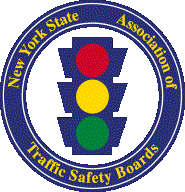AUTOBRAKE, FORWARD COLLISION WARNING OFFER SAFETY
A vehicle’s safety features should be the first thing to consider when purchasing any new car. Unfortunately, safety is often overlooked in favor of other factors totally unrelated to reducing crashes, injuries, and fatalities. This is likely because no one EXPECTS to be involved in a crash, but unfortunately, it happens all the time. Therefore, the best thing you can do is to check out the safety features before buying.
One of the most important safety features you should consider is a vehicle that offers front crash prevention. There are two versions – one that only gives only an audio warning that you are closing too rapidly on the vehicle in front, and one that not only gives a warning but also automatically applies the vehicle’s brakes if necessary. Even if this safety feature doesn’t totally prevent a crash, it stands a good chance of preventing injuries by reducing the impact speed.
In the January, 2016, issue of “Status Report” from the Insurance Institute for Highway Safety (IIHS), vehicles equipped with front crash prevention are much less likely to rear-end other vehicles. According to a recent study, systems with automatic braking reduce rear-end crashes by about 40 percent on average, while forward collision warning alone cuts them by 23 percent, the study found. The autobrake systems also greatly reduce injury crashes.
“The success of front crash prevention represents a big step toward safer roads,” says David Zuby, IIHS chief research officer. “As this technology becomes more widespread, we can expect to see noticeably fewer rear-end crashes. The same goes for the whiplash injuries that often result from these crashes and can cause a lot of pain and lost productivity.” Front crash prevention is steadily becoming more prevalent, but in most cases it is offered as optional equipment. That may soon change, however. In September, the National Highway Traffic Safety Administration and IIHS announced an agreement in principle with automakers to make autobrake standard on all models.
While we are discussing safety features to prevent or mitigate rear-ending crashes, another study by both the IIHS and the Highway Loss Data Institute (HLDI) found that a vehicle with a good rating in seat/head restraint combinations reduces the chances that drivers will sustain neck injuries if their vehicles are rear-ended. When a vehicle is struck in the rear and pushed forward, occupants’ torsos move forward with their seats. If a person’s head isn’t supported by a proper head restraint, the head lags behind the torso, and the differential motion causes the neck to bend and stretch, often resulting in injury.
The key to reducing whiplash injury risk is to move the head and torso together. To accomplish this, the geometry of a head restraint has to be adequate — high enough and near the back of the head. Then the seat structure and stiffness must be designed to work in concert with the head restraint to support an occupant’s neck and head, accelerating them with the torso as the vehicle is pushed forward. That’s why good head restraints are so important.
For more information on traffic law and traffic safety, visit the Traffic Safety Board web site at: www.franklincony.org and go to Traffic Safety Board under “Departments”. Visit us on Facebook as well. You may also contact me by email at: dwerner151@verizon.net or call me at 483-1882.
